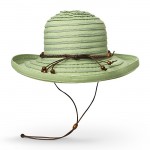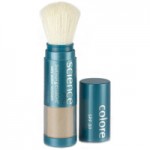 Could a topic be more complicated than a simple sunscreen? Seriously – with skin cancer rates, and SPF’s on sun screens both on the rise, it seems odd that we haven’t managed to get a handle on the situation. But, as usual, let me begin by separating truth from fiction:
Could a topic be more complicated than a simple sunscreen? Seriously – with skin cancer rates, and SPF’s on sun screens both on the rise, it seems odd that we haven’t managed to get a handle on the situation. But, as usual, let me begin by separating truth from fiction:
The higher the SPF, the safer I’ll be, right? Not so. The truth is that the highest protection you’re ever really going to get is about SPF 30 (conservatively speaking). This means that you can stay in the sun 30 times longer without burning, than you would be able to were you not wearing sunscreen. So, if you normally turn beet red after 10 minutes, the theory goes that if you slather yourself in SPF 30, you should be good for 5 hours. However, SPF only refers to UVB (the burning rays,) not UVA rays, which are the ones responsible for deep-down damage and accelerated aging. You need to purchase a broad-spectrum sunscreen to make sure you are protected from both UVA and UVB rays. Remember anything higher than an SPF 50 on a label is just marketing, and dangerous because it gives people (especially kids), a false sense of security.
The other fishy thing about the supposed SPF of a sunscreen is that it’s not an exact science, and is often completely off, even in an SPF 30 sun screen. In a recent Consumer Reports study, there was a huge gap between the SPF claim and the actual SPF of quite a few companies. Moreover the SPF doesn’t take into account:
1. How well you have applied it.
2. How often your reapply.
3. If you are in and out of the water/sweating a lot (even if it says it’s water-resistant, you can’t be sure. What if you towel off after swimming?)
Mineral versus Chemical sun protection.
Mineral Sunblock is used by most of the “natural” brands. The two main ingredients are Zinc Oxide and Titanium Dioxide, which in of themselves, are perfectly safe. They work by reflecting UVA and UVB rays away from the skin. There has been a bit of controversy because of the Nanoparticle issue. Zinc Oxide sunscreens used to be like a thick white paste, until companies ground this mineral into tiny particles (Nanoparticles), which makes the formulation go on almost completely clear. Although there is no hard science to prove that these particles can be absorbed through our skin into our bloodstream, it would still be nice to know if you product actually contains them. As with GMO’s, labeling in the EU is way stricter: All products are pre-market tested for Nanoparticles, and if the product contains them, they have to label accordingly. Here in the U.S. we have to take the word of a company, and then decide for ourselves. Personally, I am way more concerned with the formulation as a whole, than the Nanoparticle issue.
Chemcial Sunscreen (most of the drugstore brands), contains chemicals such as Oxybenzone , which has found to be a hormone disrupting chemical. Many of them also contain Vitamin A derivatives such as Retinyl Palmitate, which US government studies have found to possibly speed up the development of tumors. Although the studies are not conclusive, I think it makes sense to stay away from this ingredient.Also avoid the follwoing chemcials: Benzophenones (Oxybenzone), PABA & PABA esters, Cinnamates (cinoxate ethylhexyl, p-methoxycinnamate), Salicylates (ethlhexylsalicylate, homosalate, octylsalicylate, Avobenzone (butyl-methyoxydibenzoylmethane, Parsol1789), Digalloyltrioleate, Menthylanthranilate. If you do choose a chemical sunscreen, remember to apply at at least 30 minutes before you go in the sun.
So, what’s a sun Goddess to do?
GORGEOUS FOR GOOD Top 10 Sun Protection Tips:
1. Look for a beautifully formulated mineral sunblock (see my recommendations below).
2. Apply a fully loaded tsp (or the visual of a stack of 5 quarters), to your face, making sure you reach the edges, under your jaw, your hairline, and your ears. Apply a full shot glass worth to your body.
3. To increase your sun protection when on vacation, layer your mineral sunscreen. I do one layer all over, and then double layer on areas where my skin in thinner like my chest.
4. Completely reapply the whole shebang after swimming, showering, or intensely sweating.
 5. Always wear a hat when out in the sun. I’m a huge fan of Sunday Afternoons SPF 50 hats. Not only am I guaranteed full-on sun-protection for my head (you really need to watch your scalp), and face – but the designs, fit, and quality of these hats are second-to-none. Plus, they are reasonably-priced.
5. Always wear a hat when out in the sun. I’m a huge fan of Sunday Afternoons SPF 50 hats. Not only am I guaranteed full-on sun-protection for my head (you really need to watch your scalp), and face – but the designs, fit, and quality of these hats are second-to-none. Plus, they are reasonably-priced.
6. Use a mineral powder sunscreen brush for a facial top-up. I adore ColoreScience Sunforgettable mineral sunscreen  brushes, and think every girl should sling one in her purse and her car because even if you are fully made-up, you can use it as an easy-to-apply powder, and know that you are protected. If, however, you are sunbathing and swimming etc – I’d wear a base of a good cream SPF 30, and then apply your Sunforgettable.
brushes, and think every girl should sling one in her purse and her car because even if you are fully made-up, you can use it as an easy-to-apply powder, and know that you are protected. If, however, you are sunbathing and swimming etc – I’d wear a base of a good cream SPF 30, and then apply your Sunforgettable.
Having tested over 30 sun screens, here are my favorites. When I test a sun screen, I am looking for:
1. Good protection
2. Not opaque
3. Not greasy
3. Formulated with really healthy ingredients and preservatives.
4. A great scent.
For Your Face:
Coola Face SPF 30 rose tint ($36.00)
Suntegrity BB 5-in-1 cream ($45.00)*
Jane Iredale Glow Time makeup sunscreen ($48.00)
For Your Body
Suntegrity For The Body SPF 30 ($36.00)
Also look for Goddess Garden Organics Badger Balm, and Alba Botanica sun screens at Whole Foods Market and Lassens
If you like my content, please pass it along to your friends, and make sure you are signed up for my free weekly updates.


